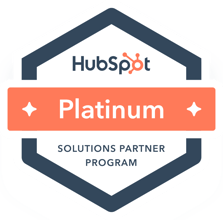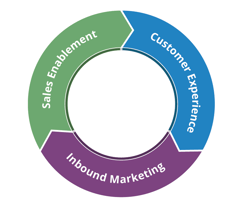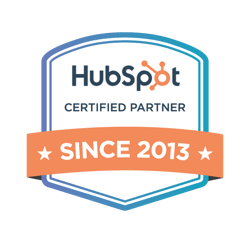Digital marketing is undergoing a seismic transformation. Automation, AI, and the decline of third-party cookies are rewriting the rules, shifting power from platforms to people, and from reach to relevance. In this fast-moving landscape, success hinges on how well brands adapt to new tools, channels, and consumer expectations. This article dives into the most important trends shaping the next wave of marketing, from real-time personalization and AI-powered search to the resurgence of first-party data and the rise of community-driven storytelling. Backed by insights from top industry experts, you'll find 15 practical takeaways and forward-looking strategies to help your digital marketing stay ahead in 2025 and beyond.
If you're not already evolving your approach, now is the time, because in today’s marketing world, standing still means falling behind.
- AI Automation Shifts Focus to Creative Quality
- AI and First-Party Data Drive Personalization
- Optimize for AI-Generated Search Overviews
- Community-Led Storytelling Gathers Organic Insights
- AI Democratizes Marketing Mix Modeling
- Embrace AI or Risk Falling Behind
- Email Signature Marketing Boosts Engagement
- Build Trust Through Genuine Customer Connections
- Prioritize Data Quality in Customer Interactions
- Data Enrichment Powering Smarter ABM in 2025
- First-Party Data Becomes a Crucial Marketing Asset
- AI Revolutionizes Account-Based Marketing Strategies
- Answer Engine Optimization Emerges as SEO Alternative
- AI Enables Real-Time Content Personalization
- Intent-Based Journeys Transform Educational Marketing
AI Automation Shifts Focus to Creative Quality
One of the most important trends in digital marketing right now is the increased automation of ad platforms, making campaign setup and optimization more accessible but also more competitive. Tools like Meta's Advantage+ and Google's Performance Max are designed to let businesses launch campaigns faster with minimal manual input. They handle targeting, bidding, and even placements automatically, reducing the technical entry barrier. However, as automation levels the playing field in media buying, the differentiator is no longer who knows the algorithm best but has the best creative and offer. Your message, visuals, and value proposition are now your primary competitive levers. The first impression—the creative—is the biggest opportunity to stand out. That's why UGC (user-generated content) and native-style creatives are trending; they feel authentic and convert well in an era where polished ads often get ignored. Second, AI is no longer optional. It's not a shiny new tool to explore—it's essential infrastructure. AI is embedded into every part of marketing, from automating content creation and personalization to predictive analytics and campaign performance optimization. Teams that embrace AI now will build compounding advantages over those that delay. We're also seeing a surge in social selling, especially on platforms like TikTok Shop, Instagram Shopping, and live commerce integrations. These channels collapse the traditional marketing funnel by turning attention directly into purchases. Social-first commerce is no longer a side tactic; it's a core strategy, especially for DTC and lifestyle brands. Finally, first-party data and retail media are gaining prominence as we move toward a cookieless world. Owning the customer relationship and building a rich CRM is more important than ever. Brands are investing heavily in email, SMS, loyalty programs, and gated content to gather consented data. Retail media, where brands advertise within retailer ecosystems (like Amazon or Walmart), is also exploding as a new paid channel that's performance-driven and built on real purchasing behavior.
Maksym Zakharko, CMO, maksymzakharko.com
AI and First-Party Data Drive Personalization
AI and first-party data are revolutionizing personalization by enabling brands to deliver highly tailored experiences based on direct customer insights. Unlike third-party data, first-party data is collected directly from user interactions, making it more accurate and privacy-compliant. When combined with AI, this data allows for real-time analysis and predictive modeling, helping businesses anticipate customer needs and optimize engagement across channels. The result is a more relevant, efficient, and trust-driven approach to personalization.
Rich Meyer, VP of Marketing, Prism Global Marketing Solutions
Optimize for AI-Generated Search Overviews
One prominent trend reshaping digital marketing is the increasing importance of optimizing content specifically for Google's AI Overviews. These AI-generated summaries appear at the top of search results, directly answering user queries by synthesizing information from various sources. Businesses need to shift from solely optimizing for organic rankings to structuring content that's easily digestible and extractable by AI, focusing on clear, concise answers to common questions.
To capitalize on this, focus on creating highly authoritative, factual content that demonstrates strong E-E-A-T (Experience, Expertise, Authoritativeness, Trustworthiness). Structure your content with prominent, direct answers at the beginning, utilize clear headings, bullet points, and schema markup (like FAQ or HowTo schema) to help AI easily identify and summarize key information, and use this "answer-first" approach to capture visibility in the evolving AI-powered search landscape.
David Pagotto, Founder & Managing Director, SIXGUN
Community-Led Storytelling Gathers Organic Insights
One emerging trend in digital marketing is the shift toward community-led storytelling as a strategy for engagement and data collection. As the industry adapts to a cookieless future, brands are rethinking how they gather insights and build trust. Whether on LinkedIn, Discord, or Reddit, well-managed communities are becoming powerful platforms where storytelling happens organically through user conversations, shared experiences, and peer recommendations.
Instead of broadcasting messages, brands are facilitating spaces where customers tell the story for them. These stories offer real-time insights into what matters to their audience, without invasive tracking. When a community member shares how a product helped them solve a problem, that narrative becomes more valuable and more trusted than any ad copy.
Digital marketing is moving toward participation over persuasion. Brands that invest in nurturing community spaces and empowering their audiences to speak will gain loyalty and the most valuable kind of first-party data: honest, unsolicited feedback wrapped in real human context.
Tiffani Neilson, Chief Marketing Officer, IoT Marketing
AI Democratizes Marketing Mix Modeling
One trend gaining traction in digital marketing is the democratization of Marketing Mix Modeling (MMM). Traditionally, MMM has been limited to large enterprises due to its reliance on extensive data and slow, retrospective analysis. However, with the rise of more accessible, AI-powered platforms, businesses of all sizes can now use MMM to make smarter, faster decisions.
What is changing is the move from using marketing mix models purely as backward-looking tools to incorporating external variables like market trends, competitive activity, and economic signals into them. This approach produces not just predictive but also prescriptive insights. This revamped approach helps marketers shift the mix model conversation from 'What worked?' to 'What should we do next?'
In a world where data from outside sources is disappearing and attribution models are more fragmented than ever, Marketing Mix Models (MMM) are a scalable, privacy-compliant way to gauge what is happening across channels. Unlike historical analyses, these models lend themselves to foresight with (occasionally, at least) optimal clarity and confidence.
Blake Smith, SEO Consultant, Blake Smith Consulting
Embrace AI or Risk Falling Behind
It's all about AI. The future of marketing is AI. So you'd better get with it or get left behind! Whether it's generating images, videos, or text, AI is revolutionizing the field. Incorporating AI into office workflows is becoming essential. Use AI assistants when it makes sense. The people who don't adopt AI will be much slower and much less productive than those who are incorporating AI into their work. Things are changing so quickly, so now is the time to figure it out!
Chris Harrison, UX UI Designer, LMH Agency
Email Signature Marketing Boosts Engagement
In addition to traditional email campaigns, we utilize "email signature marketing" by incorporating targeted banners- either below the signature or at the top of emails for greater impact—into our team's everyday messages to customers and prospects.
Because these banners can be targeted and tailored, we use upselling messages (such as promotional upgrades to our “Campaign” product) and cross-selling offers (like our design services) specifically for existing customers, always with clear, clickable calls-to-action to facilitate engagement.
Since these emails are part of ongoing conversations, they achieve 99 %+ open rates. This approach consistently drives revenue for us without relying on catchy, or worse, spammy, subject lines to cut through crowded inboxes.
Shanique Ashley Brophy, Marketing Executive, Rocketseed
Build Trust Through Genuine Customer Connections
The future of marketing is not about flashy ads or chasing viral moments; it's about showing up as a real, valuable presence in your customers' lives. Think about the brands you love most. Chances are, they make you feel understood, not targeted. That is where we are headed: building trust through genuine stories and creating spaces where your audience truly belongs.
Dhawal Shah, Co-Founder & Managing Director, 2Stallions
Prioritize Data Quality in Customer Interactions
As cookies become less popular, there is an increasing trend of returning to original data sources. Brands are beginning to analyze how well they understand their audience. Email newsletters alone are no longer enough to retain users; companies must start facilitating genuine interaction. Customers now prioritize the value they receive, so offers must be relevant, helpful, and timely. In exchange, customers provide their data for analytics purposes, such as email addresses, phone numbers, and survey responses. Technological aspects such as artificial intelligence, automation, and analytics remain important, but now data quality is becoming more important than quantity. Therefore, the main trend is to build relationships with your audience and find new, more niche channels for interaction. Better marketing strategies are achieved through context, relevance, and respect for the customer.
Taras Talimonchuk, CMO, Claspo
Data Enrichment Powering Smarter ABM in 2025
In 2025, data enrichment is central to helping B2B marketers scale and sharpen their account-based marketing (ABM) strategies. With buyers expecting more relevant and timely engagement, enriched data will give teams the insights they need to deliver highly targeted campaigns that resonate.
Data enrichment tools gather real-time information from multiple sources to enhance account profiles. This includes firmographic details, technographics, buyer intent signals, hiring trends, and individual stakeholder activity. These insights provide a clearer picture of where an account is in its buying journey and what matters most to key decision-makers.
For marketers, enriched data helps prioritize high-value accounts, personalize outreach, and align more effectively with sales. Instead of working from static CRM fields, teams can create dynamic, segmented lists and tailor messaging based on factors like technology usage, recent funding rounds, or leadership changes.
Top-performing ABM programs in 2025 are using data enrichment to:
Identify in-market accounts based on intent signals
Tailor content and campaigns to individual stakeholders
Enable sales with timely insights that guide outreach
It is essential to focus on data quality, maintain compliance, and build internal workflows that activate the insights to make the most of enrichment tools. When used strategically, enriched data turns account intelligence into a competitive advantage. ABM today is not just about who is on your target list. It is about how well you understand them, how quickly you can respond, and how effectively you can personalize their experience.
Elyse Flynn Meyer, Owner & Founder, Prism Global Marketing Solutions
First-Party Data Becomes a Crucial Marketing Asset
As third-party cookies disappear, first-party data quickly becomes one of the most valuable assets in a marketer's toolkit. Without cookies to rely on for tracking and retargeting, brands need to take ownership of their audience relationships, gathering insights directly from users through website interactions, email signups, loyalty programs, and product usage data. We're seeing more companies invest in customer data platforms (CDPs) and CRM integrations that unify this information across channels. This allows for more personalized and relevant campaigns and helps ensure compliance with growing data privacy regulations. The best practice is to make your data collection strategy user-focused. Offer something meaningful in exchange for information, whether it's a discount, a helpful resource, or an exclusive experience, and be clear about how the data will be used. Brands that build strong first-party data foundations will now have a major advantage in targeting, measurement, and personalization as the digital ad ecosystem evolves beyond third-party tracking.
Kylie Lau, Digital Marketing Specialist, MeasureMinds Group
AI Revolutionizes Account-Based Marketing Strategies
One of the most impactful trends in digital marketing is the rise of AI-powered personalization within Account-Based Marketing (ABM) strategies. By leveraging AI, marketers can analyze vast datasets to predict behavior, identify high-intent accounts, and deliver personalized experiences at scale. Tools like 6sense and Demandbase are transforming how businesses approach ABM, moving from broad, manual targeting to hyper-personalized, automated campaigns.
This shift is especially important as the industry pivots to a cookieless future. First-party data is becoming the backbone of ethical, privacy-compliant personalization, with third-party cookies fading out. AI enhances this by uncovering patterns in clean CRM data and optimizing content, timing, and channel strategies for each account. Marketers can automate follow-ups, generate tailored messaging, and align sales outreach based on real-time engagement.
As decision-makers demand more relevant, trustworthy interactions, AI-driven ABM isn't just a trend; it's the future. The brands that succeed in 2025 will be those that embrace precision, build trust through transparency, and scale personalization without compromising privacy.
Nancy Saxena, Graphic Designer Expert, BOTSHOT
Answer Engine Optimization Emerges as SEO Alternative
Answer Engine Optimization (AEO) is the next frontier of digital marketing. Optimizing for AI search tools like ChatGPT can help make up for the 30-40% decline in SEO traffic that most brands are experiencing. Profound conducted research that indicates only 12% of domains are referenced in both Google and AI Search tools like ChatGPT, which means there is a significant opportunity for brands to succeed in the generative internet.
Nick Lafferty, Growth Marketing, Profound
AI Enables Real-Time Content Personalization
One of the most transformative trends reshaping digital marketing is the integration of AI to personalize content experiences in real time, especially as we transition to a cookieless world. AI is no longer just a tool; it's a strategic partner in crafting hyper-relevant, data-informed journeys that respond to user behavior in milliseconds. The key shift? Leveraging first-party data and AI models to predict intent before it's expressed. That means building dynamic, content-driven funnels that adapt by segment and the individual's micro-moments.
For example, in a recent campaign targeting Gen Z consumers across entertainment platforms, we used AI-driven sentiment analysis and real-time engagement tracking to adjust copy and creative on the fly. Instead of static A/B testing, we allowed the AI to optimize based on emotional tone, time-of-day responsiveness, and behavioral heat maps. The result: a 3.5x improvement in click-through rates and deeper channel engagement.
As third-party cookies fade, AI becomes the bridge between privacy and personalization. Brands that invest now in AI-powered CRM enrichment and predictive content delivery will build trust and conversions at scale.
Jacques Sebastien Antoine, Marketing & Operations, The Policy Shop
Intent-Based Journeys Transform Educational Marketing
One of the most significant shifts we're seeing in digital marketing is the smarter use of first-party data to drive contextual personalization, especially in a cookieless world. This shift is necessary for industries where trust and high-intent decisions matter, like education.
What's next is a more intent-based approach to user journeys, powered by AI and automation. Instead of broad personalization, we're seeing a move toward micro-signals like the type of content a user reads or the form they fill in, to tailor follow-ups that actually help them take the next step. For instance, if someone reads a blog about switching careers into digital marketing, the follow-up communication and support they receive should reflect that context, whether it's through a counseling form, relevant course suggestion, or a curated email flow.
AI helps interpret these signals in real time, and automation ensures that the response is fast and relevant. But it all starts with ethically collected, first-party data. That's the foundation, especially as third-party tracking fades away. The marketers who get this right won't just see better conversion; they'll build lasting relationships by showing up with the right value at the right moment.
Nishta Jain, Head Of Marketing, Kraftshala
As digital marketing undergoes rapid reinvention, one truth stands out: adaptability is now a brand’s greatest asset. From AI-driven personalization to first-party data strategies and real-time content delivery, the future belongs to marketers who prioritize relevance, trust, and innovation over outdated tactics. The shift from third-party tracking to human-centered engagement isn’t just a trend; it’s the new foundation for sustainable growth. Whether you're a small business or a global brand, the time to evolve is now. Because in a world moving this fast, standing still is no longer an option.
If you're interested in discussing your current digital marketing strategy and how to improve your results, we invite you to schedule an inbound marketing consultation.


.png?width=80&height=80&name=diamond-badge-color%20(1).png)
__Square.png?width=250&height=250&name=Marketing_Hub_(1)__Square.png)




.png?width=250&name=diamond-badge-color%20(1).png)
